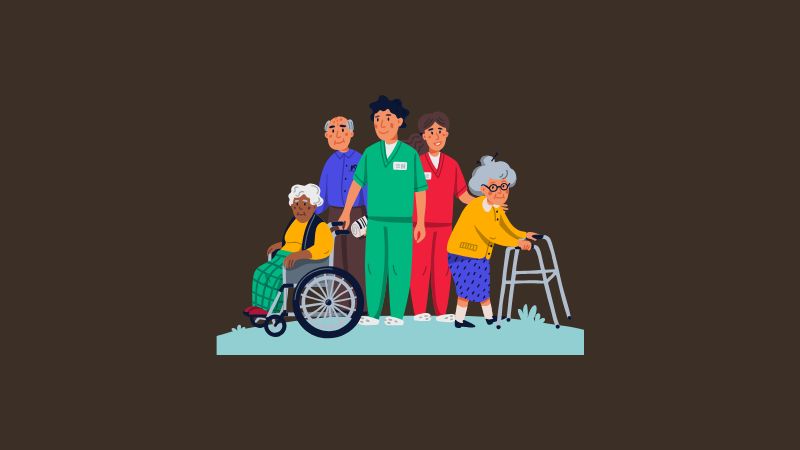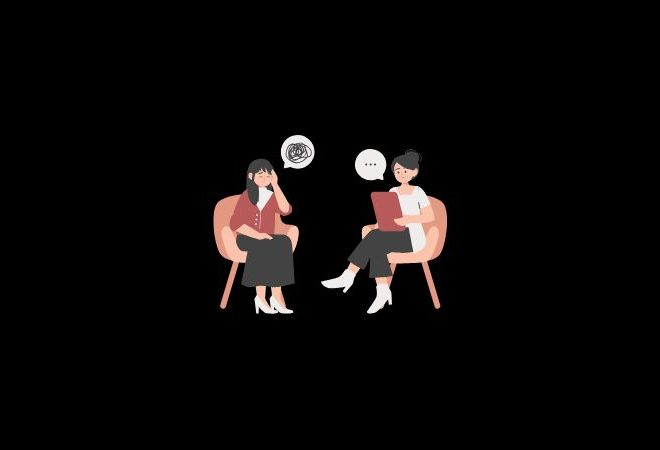
5 Methods Psychological Well being Nurses Use Therapeutic Communication
Affiliate hyperlink discover: As an affiliate of BetterHelp and different third-party distributors, We’ll obtain compensation when you make a purchase order utilizing the hyperlinks offered on this web page. For extra data, go to our disclosure web page.
Final Up to date on June 2, 2025 by Randy Withers
Psychological well being nursing is greater than administering medicine and checking vitals. It’s about connection, belief, and communication—significantly therapeutic communication, which lies on the very core of psychiatric nursing follow.
In an period the place psychological well being wants are escalating and know-how is quickly evolving, the way in which psychological well being nurses talk with sufferers is extra important—and extra complicated—than ever earlier than.
This text takes a deep dive into how psychological well being nurses use therapeutic communication to advertise therapeutic, how these expertise form affected person outcomes, and the way AI is starting to assist the nursing career.

What Is Therapeutic Communication?
Let’s start with the fundamentals. Therapeutic communication is a specialised type of dialogue utilized by healthcare professionals to assist the emotional and psychological well-being of sufferers. Not like common dialog, this type of communication is intentional, patient-centered, and designed to attain a particular scientific objective—whether or not it’s calming a distressed particular person, serving to somebody acquire perception, or gathering essential data for remedy.
It’s not nearly what you say—it’s the way you say it. Physique language, tone, eye contact, silence, timing, and cultural sensitivity all play important roles. And while you’re working with sufferers who could also be navigating psychosis, extreme nervousness, despair, or trauma, each interplay counts.
Why It Issues in Psychological Well being Nursing
Psychological well being nurses are sometimes the primary—and typically solely—clinicians a affected person interacts with repeatedly. In inpatient psychiatric models, outpatient applications, disaster facilities, correctional services, and neighborhood care, nurses present continuity, consolation, and connection. That relationship hinges on communication.
Sufferers dealing with psychological well being challenges could wrestle to articulate their ideas or may not belief healthcare professionals resulting from earlier trauma or systemic bias. In these conditions, therapeutic communication isn’t non-obligatory—it’s important.
Right here’s why it issues:
- Establishes Belief: Many sufferers really feel weak or misunderstood. Belief permits care to start.
- Promotes Openness: Good communication encourages sufferers to share ideas they could in any other case disguise.
- Reduces Nervousness and Misery: A relaxed, empathetic presence might be simpler than medicine in some acute settings.
- Facilitates Correct Evaluation: Understanding how a affected person thinks, speaks, and reacts gives important diagnostic clues.
- Builds Therapeutic Alliance: The connection between nurse and affected person immediately impacts restoration and engagement with remedy.
Key Methods in Therapeutic Communication
Therapeutic communication is each an artwork and a science. Whereas empathy is on the coronary heart of it, psychological well being nurses additionally use confirmed strategies that promote significant dialogue and affected person security.
1. Lively Listening
This implies being absolutely current—mentally and emotionally—with the affected person. Lively listening includes nodding, sustaining acceptable eye contact, paraphrasing, and avoiding interruptions.
Instance: When a affected person says, “Nobody ever listens to me,” the nurse may reply, “It sounds such as you’ve felt ignored or dismissed earlier than. I’m right here to pay attention now.”
2. Open-Ended Questions
These encourage elaboration somewhat than sure/no solutions and assist sufferers discover their ideas and feelings extra deeply.
As an alternative of: “Are you indignant?”
Attempt: “Are you able to inform me extra about what you’re feeling proper now?”
3. Validation and Empathy
Acknowledging a affected person’s emotions, even when their experiences appear irrational, builds belief and reduces defensiveness.
Instance: “I can see this example is de facto upsetting you. That’s a legitimate response to what you’ve been by means of.”
4. Reflection and Paraphrasing
Repeating key ideas or summarizing helps guarantee readability and reveals the affected person you’re engaged.
Instance: “So what I’m listening to is that you just’re feeling overwhelmed since you haven’t slept in days, and it’s beginning to have an effect on your pondering.”
5. Silence
Typically, silence permits for processing and encourages deeper self-expression. A nurse may sit quietly, providing house with out strain, whereas remaining emotionally out there.
The Position of Nonverbal Communication
What’s not mentioned is usually simply as essential. Psychological well being nurses are skilled to look at posture, gestures, facial expressions, eye actions, and different refined cues that will reveal inside misery.
Equally, a nurse’s personal nonverbal habits communicates calmness, security, and attentiveness. Crossing arms, a cellphone, or avoiding eye contact can injury rapport. However open posture, delicate tone, and relaxed physique language can have a disarming impact on sufferers in disaster.
Therapeutic Communication in Apply
Let’s take into account just a few real-life situations the place therapeutic communication performs a significant function:
Situation 1: De-escalating a Disaster
A younger man in a psychiatric emergency room is pacing, yelling that “the federal government is after me.” A nurse approaches slowly, utilizing a peaceful voice:
“You’re feeling scared proper now. I’m right here to assist, to not damage. Can we sit down collectively for a second?”
This easy, non-threatening strategy helps defuse the scenario.
Situation 2: Constructing Belief Over Time
A lady with PTSD refuses to talk throughout group remedy. As an alternative of pushing her, the nurse merely checks in every day with transient, variety phrases:
“I simply wished to say I see you. You’re doing nice simply by being right here.”
After per week, the affected person initiates a dialog. Belief has been constructed.
Situation 3: Supporting Self-Exploration
Throughout a 1:1 check-in, a nurse asks,
“What’s one thing you want folks understood about your expertise?”
This query not solely validates the affected person’s perspective however opens the door for deeper perception.
Challenges Psychological Well being Nurses Face
Therapeutic communication in nursing isn’t at all times simple. Nurses typically encounter obstacles like:
- Sufferers with communication impairments, resulting from schizophrenia, dementia, or mania
- Aggressive or resistant habits, particularly throughout involuntary hospitalizations
- Language and cultural variations, requiring sensitivity and typically interpreters
- Emotional fatigue, resulting in burnout and decreased empathy
- Time constraints, particularly in overburdened programs
Regardless of these obstacles, expert nurses be taught to navigate complexity with flexibility, cultural competence, and emotional intelligence.
The place AI Remedy Comes In
With healthcare programs beneath rising pressure, new instruments are rising to assist the emotional labor of psychological well being care. One innovation gaining floor is AI Remedy for nurses.
AI-based instruments, akin to emotion recognition software program, chatbot simulations, and decision-support programs, are being built-in into nursing schooling and day by day follow. These instruments can:
- Assist nurses put together for troublesome conversations by means of role-play
- Provide real-time suggestions on tone and content material throughout affected person interactions
- Monitor nurse well-being and flag indicators of burnout
- Help with documentation and communication logs
Importantly, AI is just not changing the human connection nurses present—it’s enhancing their capability to supply therapeutic communication extra successfully and constantly.
However It Has Clear Limitations
AI programs could wrestle with nuance, emotion, or context. They can not change:
- A nurse’s capacity to sense when silence speaks louder than phrases
- Cultural sensitivity or trauma-informed care
- The human intuition to consolation, alter, or just be current
- The belief that comes from shared emotional house
That is why therapeutic communication in nursing stays a uniquely human ability. AI could improve follow—however it may possibly’t change the artwork of connection.
Coaching for Therapeutic Communication
Most nursing applications emphasize therapeutic communication, particularly in psychiatric and behavioral well being programs. Coaching typically consists of:
- Position-playing with friends and standardized sufferers
- Coursework on trauma-informed care
- Simulation labs utilizing digital sufferers
- Ongoing CEU programs on de-escalation and battle decision
Nurses additionally be taught frameworks just like the SOLER technique (Sit squarely, Open posture, Lean in, Eye contact, Calm down) and strategies from therapeutic fashions akin to Motivational Interviewing or Dialectical Conduct Remedy (DBT).
Closing Ideas
Psychological well being nurses do greater than present care—they construct bridges between sufferers and their restoration. Therapeutic communication in nursing is the spine of this bridge. Via listening, empathy, and intention, nurses create an area the place therapeutic can start.
In a time when psychological well being wants are rising and the demand for psychiatric assist is at an all-time excessive, psychological well being nurses stand as each advocates and allies. Whether or not it’s a comforting silence, a validating assertion, or a courageous dialog, these professionals proceed to point out us that therapeutic typically begins with only one trustworthy, human connection.
Let me know when you preferred this put up. Your suggestions is essential!


